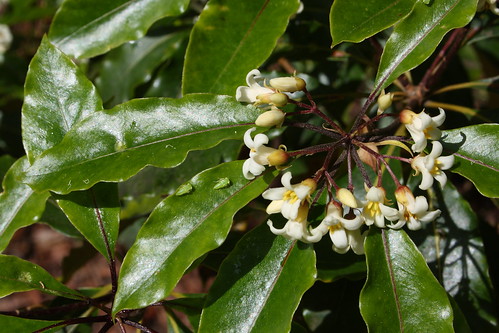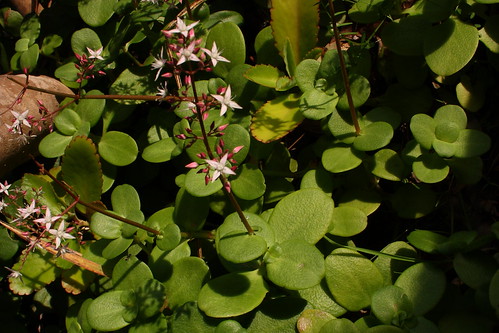Pittosporum undulatum
“Originally a scattered inhabitant of shady, rainforest gullies, it is highly opportunistic and now aggressively colonises almost any moist, shady location..” – NPOS p.196
Like the Fishbone Fern the sweet Pittosporum is a native plant that is now often considered a weed in urban bushland. Although the Sweet Pittosporum is different in that it’s also naturally found in the Sydney area.
We have a few of these in the front and back yard. It’s a small tree, the leaves are vivid green, shiny and have wavy margins, which is where is scientific name undulatum comes from. It’s meant to have a strong sweet smell when in flower. I’ve had a blocked nose for the week though and have not noticed it. The seeds are edible and were ground for food by Aboriginies.


more info:



